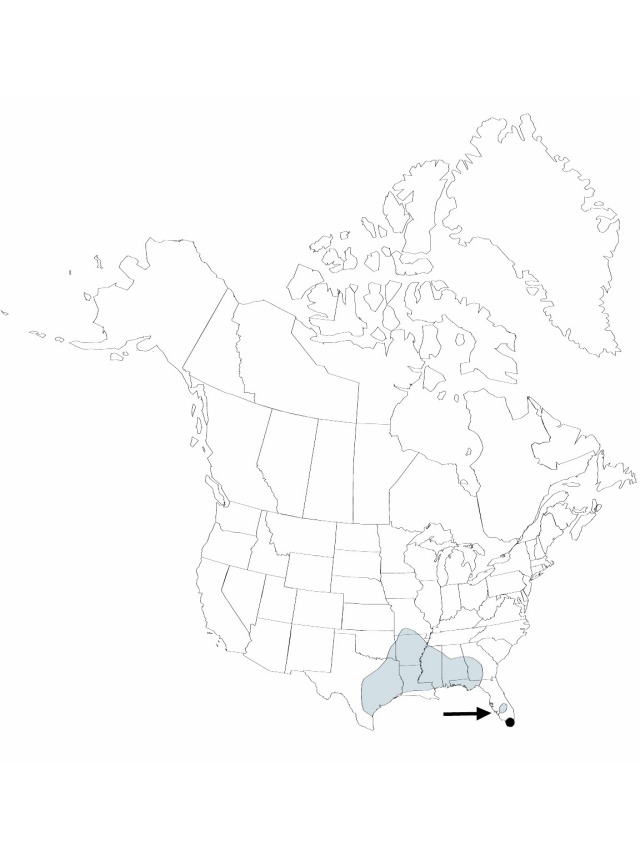Tradescantia hirsutiflora
Trans. Acad. Sci. St. Louis 14:184. 1904.
Herbs, erect or ascending, rarely rooting at nodes. Roots 1–1.5 (–2) mm thick, scarcely fleshy. Stems unbranched or sparsely branched, 5–50 cm; internodes densely spreading, pilose or hirsute to glabrous. Leaves spirally arranged, sessile; blade linear-lanceolate, 10–32 × 0.6–2 cm (distal leaf-blades equal to or narrower than sheaths when sheaths opened, flattened), apex acuminate, usually pilose, occasionally glabrous or glabrescent. Inflorescences terminal, sometimes axillary; bracts foliaceous, well developed, not saccate, sparsely to densely pilose. Flowers distinctly pedicillate; pedicels 1–3 cm, usually pilose; sepals not inflated, 7–16 mm, usually uniformly eglandular-pilose, rarely a few inconspicuous glandular-hairs present; petals distinct, bright blue to rose, rarely white, broadly ovate, not clawed, 12–19 mm; stamens free; filaments bearded. Capsules 5–7 mm. Seeds 2–3 mm. 2n = 12, 24.
Phenology: Flowering spring (Mar–Aug).
Habitat: Roadsides, fields, clearings, railroad rights-of-way, scrub, bottomlands, and pine or pine-mixed hardwood woods, usually in sandy soil
Distribution

Ala., Ark., Fla., Ga., La., Miss., Mo., Okla., Tex.
Discussion
Tradescantia hirsutiflora was considered their most ill-defined species by E. Anderson and R. E. Woodson Jr. (1935). The difficulties in separating it from T. virginiana have been mentioned under that species. A specimen from Beaufort County, South Carolina appears to be a hybrid between T. hirsutiflora and T. ohiensis, but there is no record of T. hirsutiflora from the state. Some specimens from Highlands County, Florida will key to, and probably are, T. hirsutiflora. They represent a range disjunction from the Florida panhandle. Their relationships with the co-occurring T. roseolens are being investigated.
This species commonly has been confused with Tradescantia hirsuticaulis (J. K. Small 1933; R. P. Wunderlin 1982), perhaps because of the similar name. They are not closely related.
Specimens of Tradescantia hirsutiflora with glandular hairs on the sepals were not found by D. T. MacRoberts (1980b). In Texas plants with glandular hairs are frequent, and the glandular hairs may be numerous and conspicuous. These plants, which have been referred to T. bracteata by MacRoberts, need to be investigated further. I have also seen three sheets of T. hirsutiflora from Louisiana and one from Mississippi that have a few inconspicuous glandular hairs among the numerous longer, eglandular ones.
The following hybrids are known: Tradescantia hirsutiflora × T. occidentalis, from Alabama, Louisiana; T. hirsutiflora × T. ohiensis, Alabama, Arkansas, Florida, Georgia, Louisiana, Mississippi, South Carolina; T. hirsutiflora × T. paludosa, Arkansas, Louisiana; and T. hirsutiflora × T. roseolens, Florida.
Selected References
None.